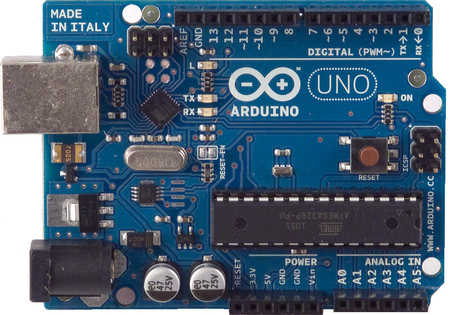twinsfan
is one Smokin' Farker
Hey guys,
I was wondering if any of you guys have ever built an Arduino, or any microcontroller, powered temperature controller.
I've always been a fan of Arduinos because of the ease of programming and relatively simple programming language, but never bought one. The Arduino Uno, pictured below, went on sale for $19 and I had to pick one up. Coming in the mail this afternoon.

Also, I ordered a 40 mm Scythe fan, for $4, which is powered by 12 V, not 5 V which is what the Arduino supplies. Not sure if it's gonna run too well, maybe an electrical engineer out there can help me out, the fan draws 0.06 amps, the Arduino powered by USB will supply 0.5 amps. I'm hoping it just runs at reduced speed.

Also have three thermistors, to measure temperature, and five 10k ohm resistors in the mail. Will build a simple circuit with some LEDs and a peizo to alert me when the temperature drops below set temp.
Sorry for techy post. Has anyone ever built their own iQue like set-up and how did it go?
Thanks
Sorry for the techy post,
I was wondering if any of you guys have ever built an Arduino, or any microcontroller, powered temperature controller.
I've always been a fan of Arduinos because of the ease of programming and relatively simple programming language, but never bought one. The Arduino Uno, pictured below, went on sale for $19 and I had to pick one up. Coming in the mail this afternoon.

Also, I ordered a 40 mm Scythe fan, for $4, which is powered by 12 V, not 5 V which is what the Arduino supplies. Not sure if it's gonna run too well, maybe an electrical engineer out there can help me out, the fan draws 0.06 amps, the Arduino powered by USB will supply 0.5 amps. I'm hoping it just runs at reduced speed.

Also have three thermistors, to measure temperature, and five 10k ohm resistors in the mail. Will build a simple circuit with some LEDs and a peizo to alert me when the temperature drops below set temp.
Sorry for techy post. Has anyone ever built their own iQue like set-up and how did it go?
Thanks
Sorry for the techy post,

